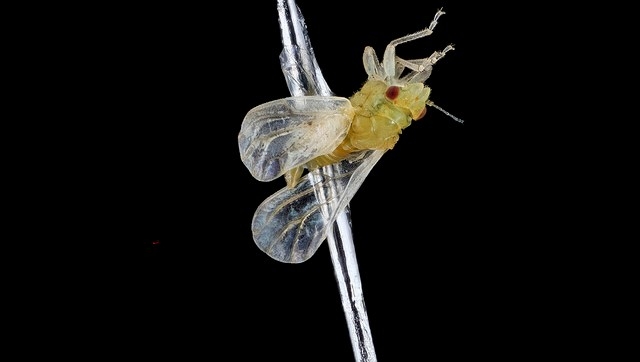IMMOKALEE, Fla. — University of Florida scientists are working toward establishing a new biological method that may help farmers control the insect that transmits the deadly greening disease into citrus trees. Greening is present in about 95 percent of the citrus trees in Florida, so by using a virus that may kill the insect, growers may be able to reduce the need for pesticides.
Instead of spraying insecticides, scientists hope to harness the natural enemies of the tiny Asian citrus psyllid to manage the invasive pest, said Ozgur Batuman, a plant pathologist at the UF/IFAS Southwest Florida Research and Education Center in Immokalee.
Batuman is leading a UF/IFAS research team investigating viruses that live in the digestive system of the psyllid. They want to see whether any of them can weaken or kill the insect.
The psyllid transmits the bacterium responsible for greening by feeding on a citrus tree's new shoots and leaves.
UF/IFAS scientists are getting promising early results with this research. Their latest research suggests a natural process that would kill the insect or at least prevent greening from being transmitted to citrus trees.
“This invasive pest is now established throughout Florida's commercial groves, so growers use insecticide sprays that are potentially harmful for the environment as one of their primary tactics for fighting citrus greening,” Batuman said. “By reducing psyllid populations in their groves, growers hope to increase the quality of fruits and the productive lives of their trees by minimizing the number of times a tree is exposed to the greening pathogen.”
To arrive at their results, Batuman and his team spent two years collecting psyllids from commercial citrus groves in 22 central and south Florida counties – from Lake and Orange counties in the north to Martin County in the southeast to Collier County in the southwest.
They identified viruses within the psyllids' bodies.
By using a test that amplifies DNA, scientists found five viruses in the guts of the psyllids they collected. They believe they can use those viruses to control the psyllids that live in the very groves from which scientists collected them.
With these experiments, for the first time, scientists have taken big strides toward identifying viruses associated with the Florida psyllids. They also now better understand the presence of those viruses in the psyllids. Asian citrus psyllids first arrived in southeast Florida in 1998.
“Future experiments will investigate how these viruses can be manipulated so that they may alter the pysllid's biology,” said Batuman. “We also need to find out how the viruses affect survival and transmission of the bacterium that causes citrus greening disease, also known as Huanglongbing, or HLB.”
“By understanding how the viruses interact with the psyllid biology, we may be able to understand how to better control the psyllids,” he said.
-30-
By: Brad Buck, 813-757-2224, bradbuck@ufl.edu, 352-875-2641 (cell)
